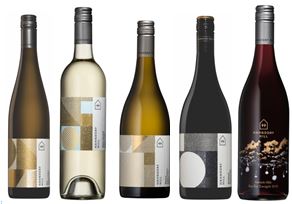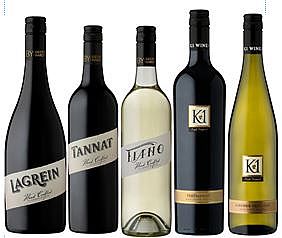By Nicki Bourlioufas
Bucking a global trend, Australian wines are becoming more diverse, with wineries diversifying away from French grapes to those from other European countries. That’s good news for a nation where Shiraz, Cabernet Sauvignon, Merlot, Chardonnay and Sauvignon Blanc dominate wine production, leading to fatigue for many Australian wine consumers.
Wine Australia has recently examined how crushes of ‘alternative varieties’. While the overall grape crush is down in 2020, after severe drought and bushfires in several grape growing regions, the proportion of alternative grape varieties out of the overall crush is on the rise (though not globally, French wine grapes are becoming more dominant).
In 2017, Wine Australia reported that alternative varieties were on the rise in Australia with some of the varieties to watch out for being Assyrtiko, Nero d’Avola (Italian), Grüner Veltliner (Austrian), Tempranillo (Spanish), Vermentino (Italian), Touriga Nacional (Portuguese), Fiano (Italian) and Nebbiolo (Italian). So how has demand for alternative Australian varieties been growing since then?
The estimated tonnes crushed of alternative varieties in the 2020 vintage was just over 125,000, says Wine Australia. While this was 2% down on 2019, the share of alternative varieties of the total grape crush rose to 8.2% from 7.4% in 2019, given the total crush declined at a higher rate. The Australian winegrape crush in 2020 was 1.52 million tonnes – the lowest since 2007, falling 12% from last year.
In terms of tonnes crashed in 2020 versus 2017, Grüner Veltliner was the only alternative white grape which rose, as the chart below shows. The crush of other alternative grape varieties was down in 2020 versus 2019 as well as down compared to 2017.


So, Grüner Veltliner is working hard to lift the profile of alternative grape varieties in Australia. Within South Australia, where most of Australia’s wine grapes are grown, the crush of Grüner Veltliner jumped 17% this year, the most of all white grape varieties.
So what is Grüner Veltliner?


Grüner Veltliner is the most widely planted wine grape in Austria. The grape produces sometimes tangy wines with spice or pepper characteristics, with citrus, stone fruit or tropical fruit characters. Others have mineral or flint flavours, depending on the producer and the grapes’ origins. Traditionally unoaked, it can also be oaked, which can add to its complexity, and the great has high levels of acid which enables it to age relatively well. In my experience, the flavour profile of Grüners can vary very widely, with some wines boasting tropical flavours like a Sauvignon Blanc, others like stone fruit not dissimilar to a Pinot Grigio, while other taste of honey or beeswax with minerality or petroleum, not dissimilar to a Riesling.
I recently attended a trade fair in Sydney on October 23 hosted by Wines of Adelaide and Peter Jackson showcased Grüner Veltliner from over 30 Austrian producers. Overall, the Australian ones I have tasted have stood up very well against their Austrian peers, with some of the local wines boasting more body and complexity than their Austrian counterparts, many of which I tasted from the 2019 vintage, reputed to be one of the best in many years.
But some Grüner Veltliner, including Austrian wines as well as Australian, are short on length. Now, that might be an oxymoron, but what I mean is that some wines taste insipid, and the grape can let the palate down at times and lack character. I tried, for example, a 2019 Percival Mill Grüner Veltliner ($38) from Henschke, one of Australia’s best wine producers, but it was short on depth and complexity compared some other Grus I’ve tasted – but the price for consumers is high. So, you need to pick your Grus carefully, I think, to ensure your dollar is well spent.
Adelaide Hills sets the (global) standard
Most Grüner Veltliner plantings in Australia are in the Adelaide Hills, where it grows very well due to a cooler climate and higher altitude than South Australia’s other more famous wine regions, the Clare Valley, McLaren Vale, the Barossa Valley and the Coonawarra. The Australian benchmark is produced by Hahndorf Hills Winery, owned by Marc Dobson and Larry Jacobs, who have pioneered Austrian grape varieties of Blaufrankisch, Gruner Veltliner, Zweigelt and St Laurent in Australia.
The Gru Gruner Veltliner 2019 is an outstanding wine, multi-award winning and loaded with character, complexity and length. Unfortunately sold out, it’s quite a remarkable wine. The 2019 Gru Gruner Veltliner has won loads of medals elsewhere in Australia and elsewhere, including a Berliner Wein Trophy 2020, as has Hahndorf Hill’s White Mischief Gruner Vetliner 2020 and the Blaufankisch 2018. The Reserve Gruner Veltliner 2017, is fine wine too, but totally different from the 2019 Gru, 100% wild-fermented in old French barrels and is then aged on the lees prior to bottling, and it does taste a little like a Burgundian Chardonnay thanks to some French oak and some malo-lactic fermentation. All very different again from the more tropical and crisp 2020 White Mischief.


According to Hahndorf Hill winemaker Larry Jacobs, the Adelaide Hills is ideally suited to Grüner Veltliner and we are fortunate to have a huge diurnal temperature variation – similar to Grüner’s original home in Austria.
“This combination of warm summer days and cool night allows our region to successfully grow an impressive range of so-called alternative varieties. In addition to our climatic personality, our region’s soils and hilly slopes falling away in all directions, allow us to celebrate not only many different soil types, but also a huge variation in microclimates related to the hilly topography,” says Jacobs.
“At the 2019 Global Gruner Challenge held by Austria’s Vinaria Magazine, Gruners from around the world competed against the best from Austria, and Hahndorf Hill’s Gruner Veltliner was the joint top-rated Gruner outside of Austria … and we were placed in the top 12 wines evaluated out of 175 entries from around the world,” says Jacobs.
“These results confirmed that the conditions of terroir in our region are well suited to producing top quality Gruner.”
At the Decanter World Wine Awards 2020, the top Grüner Veltliner did not come from Austria this year, but from the Adelaide Hills, the Hahndorf Hill Gru Gruner Veltliner 2019, which won the the Gold Medal in the Gruner category while Nepenthe, another Adelaide Hills producer, won the Silver Medal.
“This award was particularly exciting for me because I believe it will justify the faith and conviction that all the other Gruner growers in the Adelaide Hills have exhibited, by demonstrating that our region is indeed perfect for this wonderful and complex variety, and that we can make Gruners here that can compare to the best in the world.”
A 2020 vintage of the Gru Gruner Veltliner has been released (RRP$30). The White Mischief Gruner Veltliner 2020 ($24), Reserve Gruner Veltliner 2017 ($45), Blueblood Blaufrankisch 2017 ($47) and Zsa Zweigelt 2018 ($35), another popular grape variety from Austria, are all still available here.
New releases from Wines by Geoff Hardy also boast several alternatives to French varieties. They include the award-winning 2019 K1 Gruner Veltliner (RRP $25), which recently won a trophy for ‘best other varietal white’ at the Royal Adelaide Wine Show, Australia’s most prestigious wine show, with its impressive elegance and flavour and very decent price tag, for such quality. Along with pear and apple, the wine has an elegant mineral finish with a touch of French oak.


Other new releases beyond traditional French varietals include the K1 2019 Tempranillo ($25), 2019 Hand Crafted Fiano ($25), 2018 Hand Crafted by Geoff Hardy Tannat ($30), 2019 Hand Crafted Langrein ($30) and 2019 Hand Crafted Nero D’Avola ($25). You can buy these direct from the winery here.
Greg Horner, who owns Mt Bera Vineyards with his wife Katrina, says the Austrian variety does very well in the Adelaide Hills, producing fuller, longer flavours than some of Austria’s own ‘Gru’ wines. He has also planted Blaufrankisch and Zweigelt, after ripping out French grapevines to make way for the Austrian varietals.
“When we purchased Mt Bera in 2008 there were three varieties – Cabernet Sauvignon, Merlot and Pinot Noir … We ripped out the Cab Sauv and planted Gruner Veltliner, which not only loves the diurnal temperature variation but requires cool nights to retain its signature pepper spice,” says Horner. Mt Bera sells several three versions of Grüner Veltliner, a 2016 Gru ($25) and 2018 Gru ($35) and a sparkling Gru ($25) and you can buy them here.
According to a report published by Wine Australia, the Adelaide Hill is perfect for the grape. “Technically, there are a number of good reasons why Gruner Veltliner can be planted in the Adelaide Hills. The region’s soils – predominantly grey-brown or brown loamy sands with patches of sand, all of which are wonderfully free-draining – are undoubtedly well-suited to Gruner Veltliner. Equally the climate is right for it,” writes Giles Lockett in Adelaide Hills Gruner Veltliner, Right grape. Right place. Right reason.
So how do you say it?
The Adelaide Hills, like the Barossa Valley, in South Australia was settled by German speaking settlers so it is the one place in Australia where we just might get the pronunciation of the variety right.
Or wrong. It is not an easy name to say unless you know a bit of German. Most important, the ‘V’ in German sounds like ‘F’ in English. Below is a guide from Wine Selector. German is largely phonetic – (apart from the ‘V” and the umlauts, which sit over vowels). This is a good guide to getting the pronunciation right, or at least improved.


Editor note: Hahndorf Hills’ Winery’s Larry Jacobs also publishes his own blog, the Gru Files.
